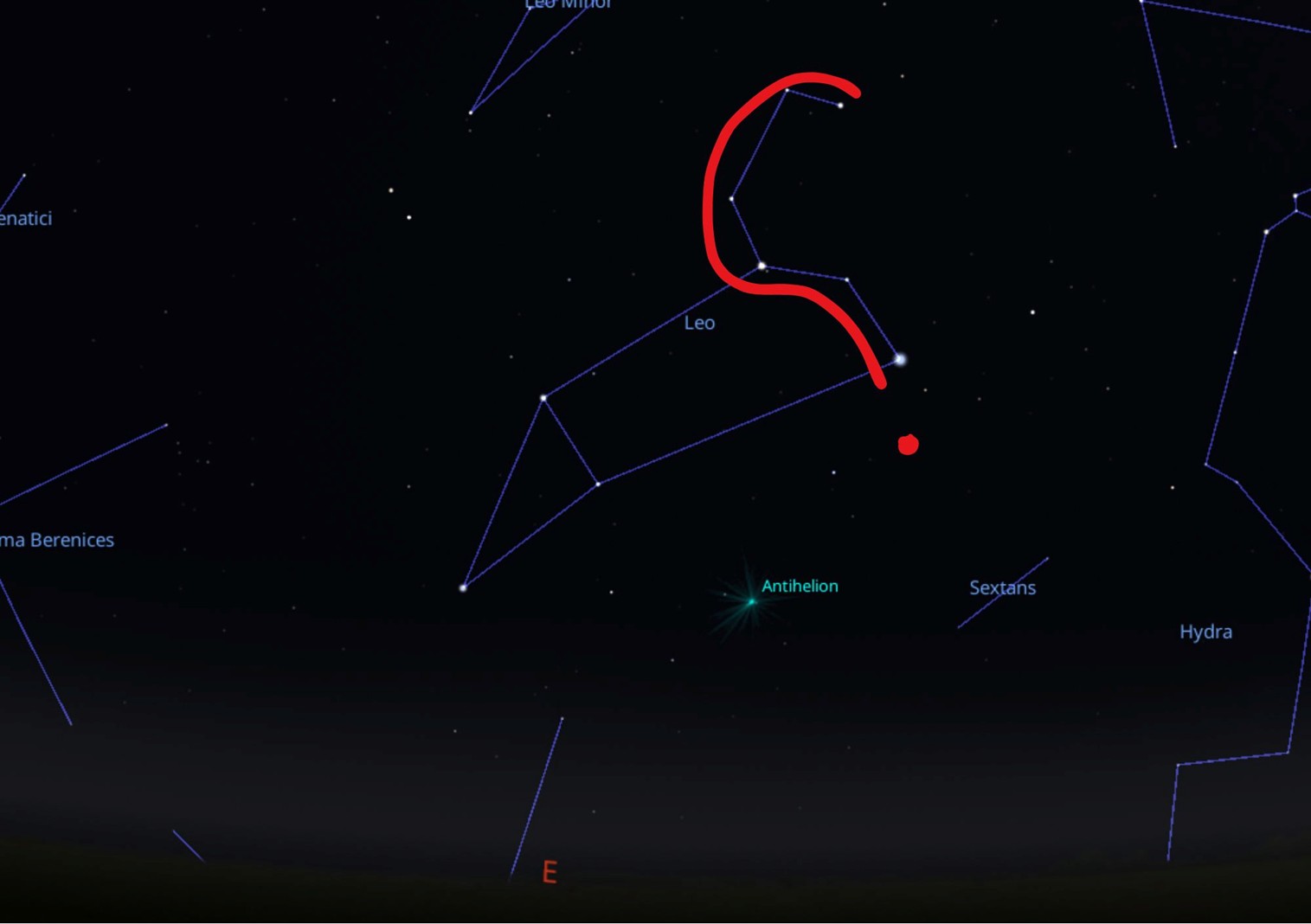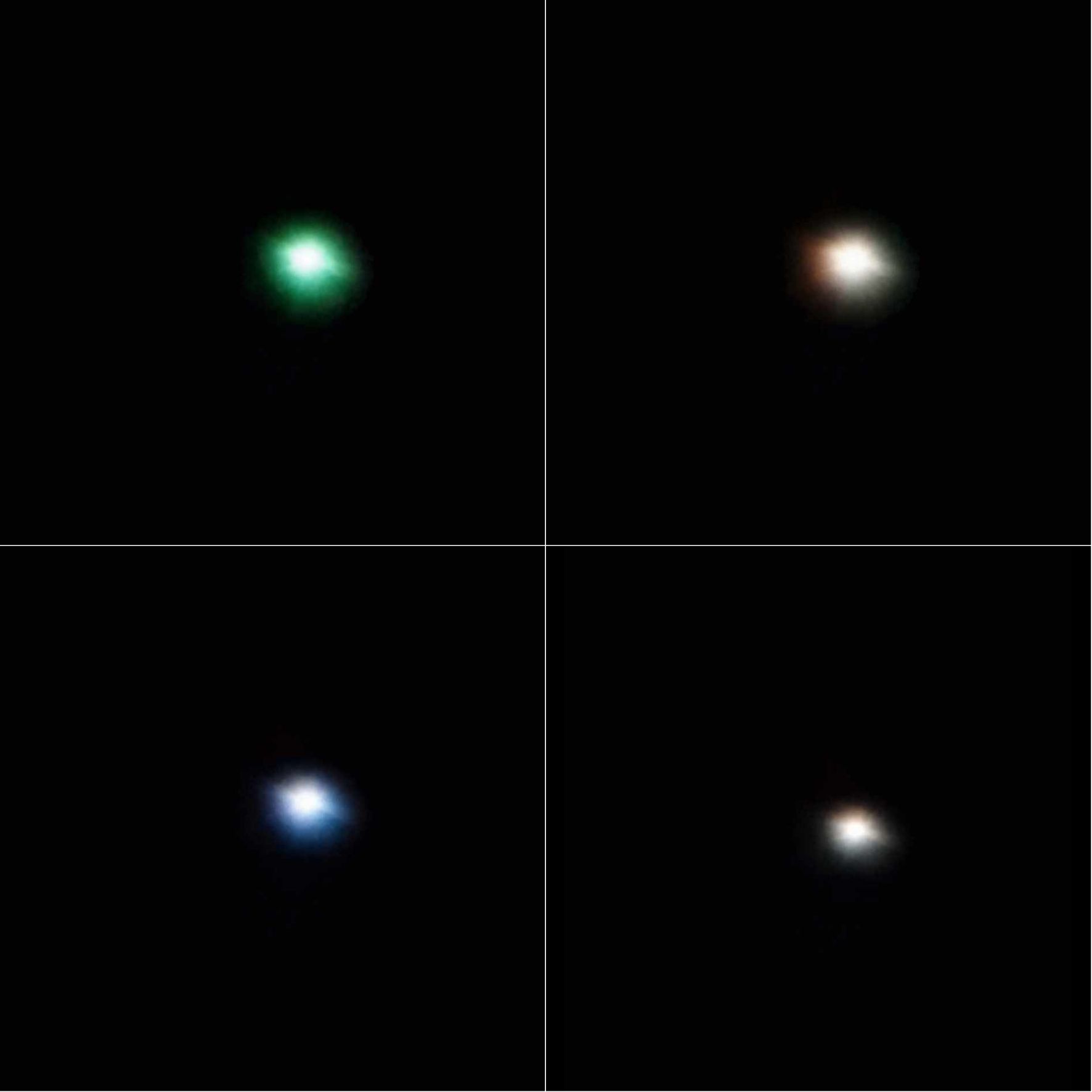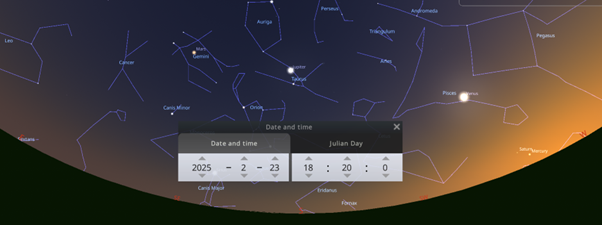What’s Up? February 2025
It’s the shortest month of the year, but there’s still lots to see in the sky! From planetary parades to particularly bright stars, in this edition of What’s Up? we’ll be taking you through all the best things to see this month.
Constellations
This month Orion will continue to loom large over the southern horizon, but he’s not alone there. This month, why not try to spot some of the smaller constellations like Canis Major and Lepus? To find Canis Major you would be best looking for its brightest star – Sirius (also our object of the month!). Sirius is the brightest star in the sky, so finding it should be fairly easy, but if you want to be 100% certain that you have it you can use Orion’s belt as a guide.
Orion’s belt consists of 3 stars – Mintaka, Alnilam, and Alnitak. To find Sirius you want to draw a line from Mintaka on the right to Alnitak on the left and then continue it down to the brightest star you can see. Canis Major is supposed to resemble a dog, and it certainly does that very well. There is a distinct head, body, legs, and tail. In fact, the elongated body makes it look very specifically like a dachshund!

How to find Sirius and Canis Major using Orion. Credit: Stellarium
Finding Lepus, the rabbit, can be a bit trickier as there isn’t a particularly notable star to aim for, but it is directly below Orion and its two brightest stars, Arneb and Nihal, will look similar to Orion’s bottom left star Saiph.
Also returning to our skies this month is Leo the Lion! This large constellation will be rising out of the eastern horizon as it gets dark and to spot it you can look for the distinctive “backwards question mark” of the Lion’s mane. You’ll be hearing a lot more about Leo from us as it rises higher in the sky towards Spring.

Leo rising in the eastern sky. Credit: Stellarium
Object of the Month – Sirius
Usually we like to focus on objects like galaxies, clusters, and nebulas for this section, but this month I want to pay special attention to just one star. Or technically two I suppose.
As previously mentioned, Sirius is the brightest star in the sky and it can be easily located using Orion’s belt. We only have Sirius in our sky for a small portion of the year as it is part of the Southern Celestial Hemisphere. To the naked eye Sirius will appear to shimmer and twinkle in the night sky, an effect which is magnified when seen through a pair of binoculars or a telescope. This twinkling is caused by our atmosphere because as the starlight passes through it, it is distorted. Low down, there is more atmosphere for the light to pass through so the effect is greater than when a star is directly above you.

Sirius through a telescope appears to “flash” different colours as you watch it.
Sirius is approximately 8.6 light years away from us making it one of the closest stars you can see in the sky, and this is one reason why it is so bright. The other reason is simply that it is intrinsically bright being around 25 times more luminous than our Sun. Sirius is also a binary star with Sirius A being the brighter and Sirius B a smaller white dwarf star.
This is the one time we would recommend you look at an object out of focus. While beautiful to see normally, when you unfocus your view of Sirius it begins to look like a sparkler with different colours shooting off in all directions.
“Planetary Parade”
In January we saw the start of the “planetary parade”, an alignment of the solar system planets that allowed us to see the big 4 (Venus, Saturn, Jupiter, and Mars) stretching across the sky at the same time, with Uranus and Neptune also joining in the fun for those with telescopes. There is still time to see the planets this month, and Mercury will be saying hello!
Mercury spent January on the other side of the Sun from the rest of the solar system, meaning it set before the Sun did. This month it is coming to the dark side and so you are in with a chance of seeing 5 planets with the naked eye stretching across the sky from east to west. For the best chance of seeing it, you will want to find somewhere with low horizons because as the Sun sets both Saturn and Mercury will be very low in the sky. Uranus and Neptune will continue to only be visible to those with telescopes and dark skies.

Mercury, Saturn, Venus, Jupiter, and Mars in alignment on the 23rd February 2025. Credit: Stellarium
The Moon Phases
First Quarter: 5th February
Full Moon: 12th February
Third Quarter: 20th February
New Moon: 28th February
















